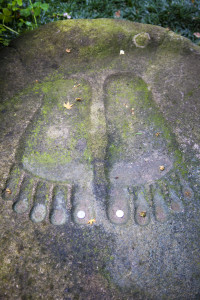Dear Integral Meditators,
Many spiritual paths and religions and take “God-realization” as their object of attainment, but what if you can’t find God? This weeks article takes both a playful and serious look at this issue. Complementary reading would be the article on “The Four Less-nesses of Enlightenment” that I wrote a few weeks back.
Yours in the spirit of the God beyond God,
Toby
Upcoming Meditation Classes and Workshops at Integral Meditation Asia
Coming soon
 Does God Exist? A Meditators Perspective (and what to tell your kids)
Does God Exist? A Meditators Perspective (and what to tell your kids)
A couple of weeks ago my daughter Sasha (8yrs) asked me “Does God really exist? After all you can’t really see him or prove he does”. This is a classic response from a child developing her rational faculties and for whom the previous concept of a creator in the sky, a little like a big father or mother, becomes obviously and patently untrue.
For many of us as we move into adulthood it seems like we are faced with a dilemma; either we accept an unseen, unknowable God on faith, or we decide that he does not exist and that there is no God.
The path of meditation offers a second, non-philosophical perspective on the existence or not of God which is put succinctly in the modern day Zen saying:
“There is no-God and he is your creator”
The way I answered to my daughter was as follows:
- God exists in a place called no-thing, and no-thing is the place where everything comes from, so you can find God in everything.
- God lives in a place called no-where, and no-where is the place where somewhere comes from. So because God is no-where he is the only person you can find everywhere.
- Gods’ identity is in a place called no-self, which is the place where all selves arise. So at the heart of every self there is no-self, which is where you find God.
So, the idea with these three sentences is that they invite a person enquiring after the existence of God to go beyond the world of ideas, philosophy or theology and move instead into a space of experiential, non-conceptual investigation and curiosity.
With these sentences you just need to read them, and then ‘drop-in’ to the space that they invite you into and to be with that space, to be present to something that lies beyond your mind, beyond rationality, beyond ideas.
- God is un-findable in the world of things, so if you drop into a space of no-thing, that is where she will be, although of course that would be non-be
- There is no place where God ‘lives’, so if you go to nowhere, that is where you will find him
- God does not have a self, so if you let go of your own self completely, then you will find God there
To the cynic this can just sound like word games, but as I say the idea is to use the words to go beyond the words to a non-conceptual, living experience that you then hold and rest in.
After finishing this article I then asked my daughter “So what did you think of those definitions of God that I gave you?”
“Good” she said, not looking up from her book.
“Really I said? Stop reading and come here for a moment”
She stood up and came over to me. I asked her the same question
“So what did you think of those definitions of God that I gave you?”
She looks at me, smiles and said “Excellent!”
Then she rolls her eyes, puts on her most ironic face, then sits down to read again.
I think that is what you call approving non-approval.
© Toby Ouvry 2014, you are welcome to use or share this article, but please cite Toby as the source and include reference to his website www.tobyouvry.com
 Support for you Meditation Practice
Support for you Meditation Practice
If you enjoyed the article above, and are interested in sound technology that can help you more easily get into deeper states of meditation, the following two tracks work well with cultivating formless, timeless meditations:




 Connecting to Your Spiritual Fool in the Mirror World
Connecting to Your Spiritual Fool in the Mirror World


